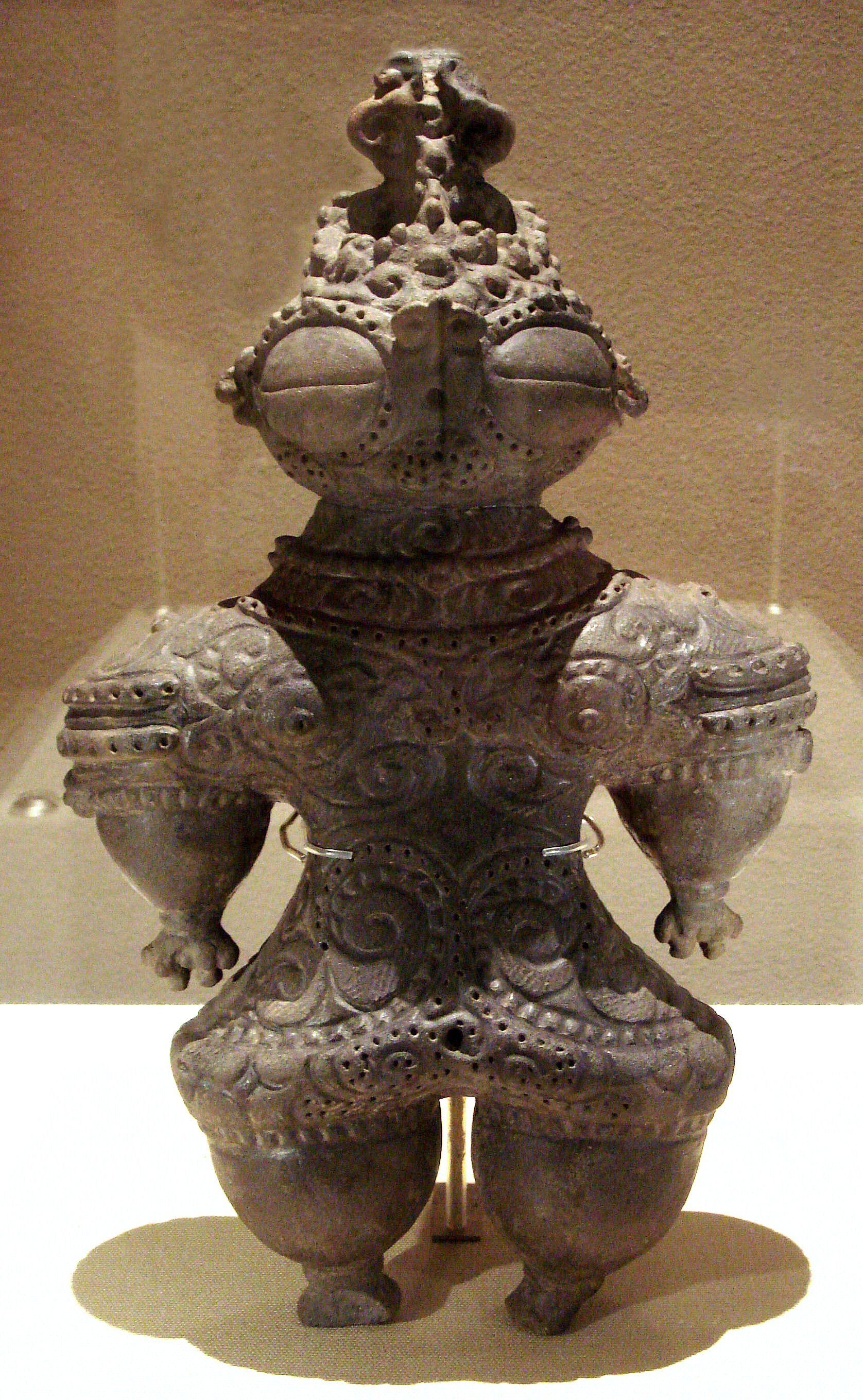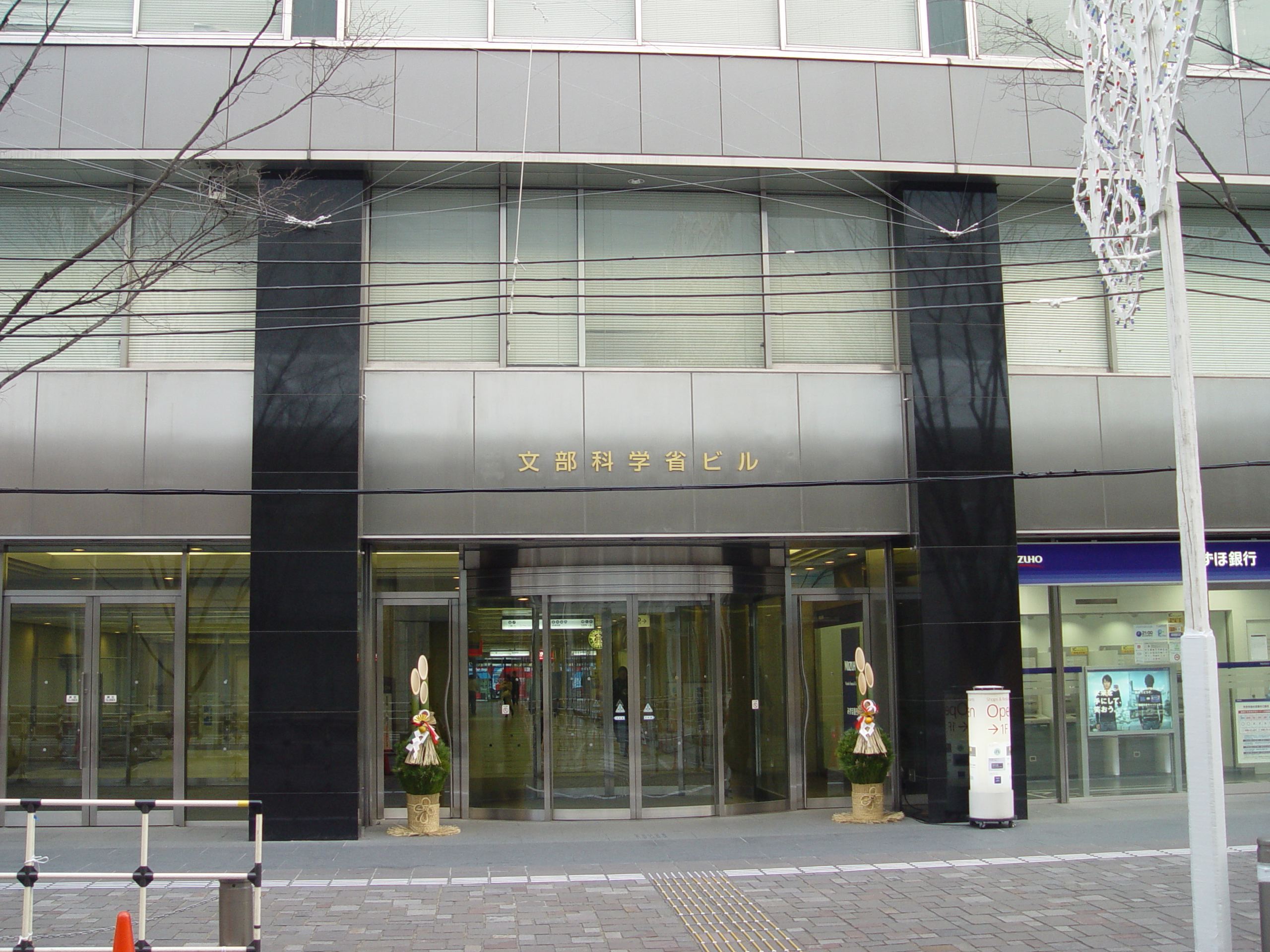|
Isedōtai Ruins
The are a late Jōmon period archaeological site in the city of Kitaakita, Akita Prefecture, in the Tōhoku region of northern Japan. Discovered during the construction of a highway to nearby Odate–Noshiro Airport, the remains were designated a National Historic Site of Japan in 2001 by the Japanese government. The site is located approximately five minutes on foot from on the Akita Nairiku Railway. Site The site consists of three large stone circles located on an artificially flattened plateau on the west bank of the Yoneshiro River. The largest circle is between 42 and 45 meters in diameter, and completely encloses a fourth stone circle. The stones, including porphyrite, rhyolite and tuff, were brought from rivers up to five kilometers away, and the site has a moat on its eastern side with a length of more than 100 meters. More than 100 pits have been found, both inside and outside the stone circles, containing terracotta plates and jars, and small clay objects along w ... [...More Info...] [...Related Items...] OR: [Wikipedia] [Google] [Baidu] |
Jōmon Period
In Japanese history, the is the time between , during which Japan was inhabited by the Jōmon people, a diverse hunter-gatherer and early agriculturalist population united by a common culture, which reached a considerable degree of sedentism and cultural complexity. The name "cord-marked" was first applied by the American zoologist and orientalist Edward S. Morse, who discovered Glossary of archaeology#potsherd, sherds of pottery in 1877 and subsequently translated "straw-rope pattern" into Japanese language, Japanese as ''Jōmon''.Mason, 14 The pottery style characteristic of the first phases of Jōmon culture was decorated by impressing cords into the surface of wet clay and is generally accepted to be among the oldest in the world. The Jōmon period was rich in tools and jewelry made from bone, stone, shell and antler; Jōmon pottery, pottery figurines and vessels; and lacquerware.Imamura, K. (1996) ''Prehistoric Japan: New Perspectives on Insular East Asia''. Honolulu: Unive ... [...More Info...] [...Related Items...] OR: [Wikipedia] [Google] [Baidu] |
Dogū
are small humanoid and animal figurines made during the later part of the Jōmon period (14,000–400 BC) of prehistoric Japan. ''Dogū'' come exclusively from the Jōmon period, and were no longer made by the following Yayoi period. There are various styles of ''dogū'', depending on the exhumation area and time period. The National Museum of Japanese History estimates that the total number of ''dogū'' is approximately 15,000, while ''The Japan Times'' places the figure at approximately 18,000. ''Dogū'' were made across all of Japan, except Okinawa. Most of the ''dogū'' have been found in eastern Japan and it is rare to find one in western Japan. The purpose of the ''dogū'' remains unknown and should not be confused with the clay ''haniwa'' funerary objects of the Kofun period (250 – 538 C.E.). Everyday ceramic items from the period are called Jōmon pottery. Origins Some scholars theorize the ''dogū'' acted as effigies of people, that manifested some kind of ... [...More Info...] [...Related Items...] OR: [Wikipedia] [Google] [Baidu] |
History Of Akita Prefecture
History is the systematic study of the past, focusing primarily on the human past. As an academic discipline, it analyses and interprets evidence to construct narratives about what happened and explain why it happened. Some theorists categorize history as a social science, while others see it as part of the humanities or consider it a hybrid discipline. Similar debates surround the purpose of history—for example, whether its main aim is theoretical, to uncover the truth, or practical, to learn lessons from the past. In a more general sense, the term ''history'' refers not to an academic field but to the past itself, times in the past, or to individual texts about the past. Historical research relies on primary and secondary sources to reconstruct past events and validate interpretations. Source criticism is used to evaluate these sources, assessing their authenticity, content, and reliability. Historians strive to integrate the perspectives of several sources to develop a ... [...More Info...] [...Related Items...] OR: [Wikipedia] [Google] [Baidu] |
Stone Circles In Asia
In geology, rock (or stone) is any naturally occurring solid mass or aggregate of minerals or mineraloid matter. It is categorized by the minerals included, its chemical composition, and the way in which it is formed. Rocks form the Earth's outer solid layer, the crust, and most of its interior, except for the liquid outer core and pockets of magma in the asthenosphere. The study of rocks involves multiple subdisciplines of geology, including petrology and mineralogy. It may be limited to rocks found on Earth, or it may include planetary geology that studies the rocks of other celestial objects. Rocks are usually grouped into three main groups: igneous rocks, sedimentary rocks and metamorphic rocks. Igneous rocks are formed when magma cools in the Earth's crust, or lava cools on the ground surface or the seabed. Sedimentary rocks are formed by diagenesis and lithification of sediments, which in turn are formed by the weathering, transport, and deposition of existing rocks. M ... [...More Info...] [...Related Items...] OR: [Wikipedia] [Google] [Baidu] |
Tourist Attractions In Akita Prefecture
Tourism is travel for pleasure, and the commercial activity of providing and supporting such travel. UN Tourism defines tourism more generally, in terms which go "beyond the common perception of tourism as being limited to holiday activity only", as people "travelling to and staying in places outside their usual environment for not more than one consecutive year for leisure and not less than 24 hours, business and other purposes". Tourism can be domestic (within the traveller's own country) or international. International tourism has both incoming and outgoing implications on a country's balance of payments. Between the second half of 2008 and the end of 2009, tourism numbers declined due to a severe economic slowdown (see Great Recession) and the outbreak of the 2009 H1N1 influenza virus. These numbers, however, recovered until the COVID-19 pandemic put an abrupt end to the growth. The United Nations World Tourism Organization has estimated that global international tourist a ... [...More Info...] [...Related Items...] OR: [Wikipedia] [Google] [Baidu] |
Agency For Cultural Affairs
The is a special body of the Japanese Ministry of Education, Culture, Sports, Science and Technology (MEXT). It was set up in 1968 to promote Japanese arts and culture. The agency's budget for FY 2018 rose to ¥107.7 billion. Overview The agency's Cultural Affairs Division disseminates information about the arts within Japan and internationally, and the Cultural Properties Protection Division protects the nation's cultural heritage. The Cultural Affairs Division is concerned with such areas as art and culture promotion, art copyrights, and improvements in the national language. It also supports both national and local arts and cultural festivals, and it funds traveling cultural events in music, theater, dance, art exhibitions, and film-making. Special prizes are offered to encourage young artists and established practitioners, and some grants are given each year to enable them to train abroad. The agency funds national museums of modern art in Kyoto and Tokyo and The National ... [...More Info...] [...Related Items...] OR: [Wikipedia] [Google] [Baidu] |
Matagi
The are traditional winter hunters of the Tōhoku region of northern Japan, most famously today in the Ani area in Akita Prefecture, which is known for the Akita dogs. Afterwards, they spread to the Shirakami-Sanchi forest between Akita and Aomori, and other areas of Japan. Documented as a specialised group from the medieval period onwards, the Matagi continue to hunt deer and bear in the present day, and their culture has much in common with the bear worship of the Ainu people. With the introduction of modern firearms in the 19th century, and mass-production of reloadable cartridges beginning with the Murata rifle, the need for group hunting for bear has diminished, leading to a decline in Matagi culture. Matagi hamlets are found in the districts of Nishitsugaru and Nakatsugaru (Aomori Prefecture), Kitaakita and Senboku (Akita Prefecture), Waga (Iwate Prefecture), Nishiokitama and Tsuruoka (Yamagata Prefecture), Murakami and Nakauonuma (Niigata Prefecture and Nag ... [...More Info...] [...Related Items...] OR: [Wikipedia] [Google] [Baidu] |
List Of Historic Sites Of Japan (Akita)
This list is of the Monuments of Japan, Historic Sites of Japan located within the Prefectures of Japan, Prefecture of Akita Prefecture, Akita. National Historic Sites As of 1 July 2019, thirteen Sites have been Cultural Properties of Japan, designated as being of national Values (heritage), significance (including one *List of Special Places of Scenic Beauty, Special Historic Sites and Special Natural Monuments, Special Historic Site); Mount Chōkai spans the prefectural borders with Yamagata Prefecture, Yamagata. Prefectural Historic Sites As of 24 May 2019, forty Sites have been designated as being of prefectural importance. Municipal Historic Sites As of 1 May 2018, a further one hundred and seventy-eight Sites have been designated as being of municipal importance. See also * Cultural Properties of Japan * Dewa Province * Mutsu Province * Akita Prefectural Museum * List of Cultural Properties of Japan - paintings (Akita) * List of Places of Scenic Be ... [...More Info...] [...Related Items...] OR: [Wikipedia] [Google] [Baidu] |
Hokkaidō
is the second-largest island of Japan and comprises the largest and northernmost prefecture, making up its own region. The Tsugaru Strait separates Hokkaidō from Honshu; the two islands are connected by railway via the Seikan Tunnel. The largest city on Hokkaido is its capital, Sapporo, which is also its only ordinance-designated city. Sakhalin lies about to the north of Hokkaidō, and to the east and northeast are the Kuril Islands, which are administered by Russia, though the four most southerly are claimed by Japan. The position of the island on the northern end of the archipelago results in a colder climate, with the island seeing significant snowfall each winter. Despite the harsher climate, it serves as an agricultural breadbasket for many crops. Hokkaido was formerly known as '' Ezo'', ''Yezo'', ''Yeso'', or ''Yesso''. Nussbaum, Louis-Frédéric. (2005). "Hokkaidō" in Although Japanese settlers ruled the southern tip of the island since the 16th century, Hok ... [...More Info...] [...Related Items...] OR: [Wikipedia] [Google] [Baidu] |







